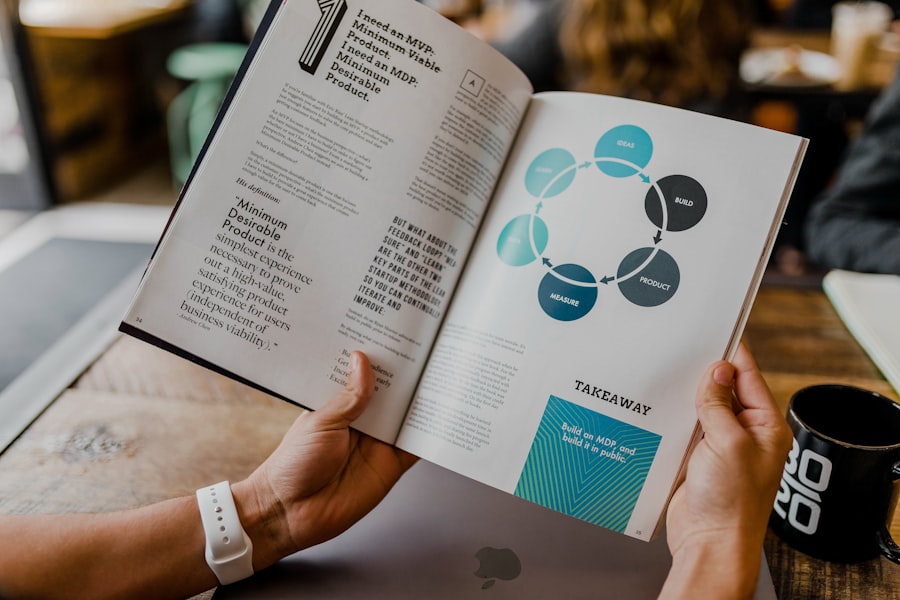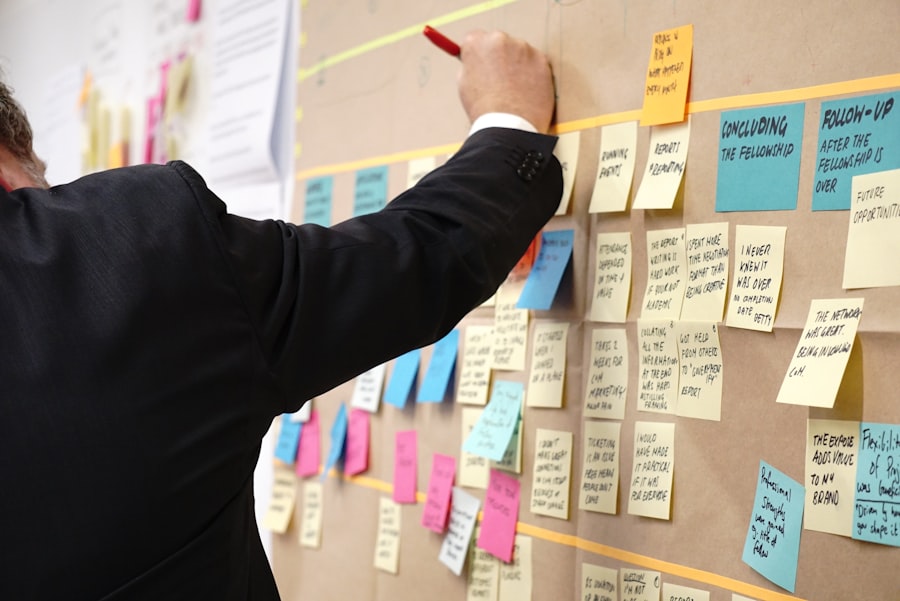In the realm of product development, a profound understanding of the market and customer needs is paramount. This foundational step involves not only identifying who the customers are but also delving into their preferences, pain points, and behaviors. Market research techniques such as surveys, focus groups, and interviews can provide invaluable insights.
For instance, a tech company launching a new software application might conduct user interviews to uncover specific challenges users face with existing solutions. By analyzing this qualitative data alongside quantitative metrics, such as usage statistics and market trends, companies can create a comprehensive picture of customer expectations. Moreover, understanding the competitive landscape is equally crucial.
This involves assessing competitors’ offerings, pricing strategies, and market positioning. A thorough competitive analysis can reveal gaps in the market that a new product could fill. For example, if a competitor’s product lacks certain features that customers desire, this presents an opportunity for differentiation.
Companies can leverage tools like SWOT analysis (Strengths, Weaknesses, Opportunities, Threats) to evaluate their position relative to competitors and identify strategic advantages. By synthesizing customer insights with competitive intelligence, organizations can ensure that their product development efforts are aligned with market demands.
Key Takeaways
- Deeply understanding market trends and customer needs is essential for successful product development.
- Clear, measurable goals guide focused efforts and track progress effectively.
- Cross-functional teams enhance collaboration and bring diverse expertise to the development process.
- Agile and lean methodologies enable flexibility, faster iterations, and efficient resource use.
- Continuous testing, feedback, and adaptation drive ongoing product improvement and alignment with user expectations.
Setting Clear and Measurable Goals
Once a deep understanding of the market and customer needs is established, the next step is to set clear and measurable goals. These goals serve as a roadmap for the product development process, guiding teams toward desired outcomes. Effective goal-setting often follows the SMART criteria—Specific, Measurable, Achievable, Relevant, and Time-bound.
For instance, instead of a vague goal like “increase user engagement,” a SMART goal would be “increase daily active users by 20% within six months.” This specificity not only clarifies expectations but also allows for tracking progress over time. In addition to setting goals for user engagement or sales figures, it is essential to establish key performance indicators (KPIs) that will help measure success. KPIs could include metrics such as customer satisfaction scores, churn rates, or net promoter scores (NPS).
By regularly monitoring these indicators, teams can assess whether they are on track to meet their objectives or if adjustments are necessary. Furthermore, involving cross-functional teams in the goal-setting process fosters a sense of ownership and accountability, ensuring that everyone is aligned and motivated to achieve the common objectives.
Leveraging Cross-Functional Teams

The complexity of modern product development necessitates collaboration across various functions within an organization. Leveraging cross-functional teams brings together diverse expertise from areas such as marketing, engineering, design, and customer support. This collaborative approach enhances creativity and innovation by allowing team members to share different perspectives and insights.
For example, when developing a new consumer electronics product, input from engineers regarding technical feasibility can be balanced with marketing insights about consumer preferences. Cross-functional teams also facilitate better communication and reduce silos that often hinder progress. Regular meetings and collaborative tools can help ensure that all team members are informed about project developments and challenges.
For instance, using project management software like Trello or Asana allows teams to track tasks in real-time and maintain transparency about responsibilities. This level of collaboration not only accelerates decision-making but also fosters a culture of shared responsibility where each member feels invested in the product’s success.
Utilizing Agile and Lean Product Development Methods
| Metric | Description | Typical Value / Range | Benefit |
|---|---|---|---|
| Cycle Time | Time taken from the start of work on a feature to its delivery | 1-4 weeks | Faster delivery and quicker feedback loops |
| Lead Time | Time from feature request to feature delivery | 2-6 weeks | Improved responsiveness to customer needs |
| Velocity | Amount of work completed in a sprint (story points) | 20-50 story points per sprint | Predictable delivery and capacity planning |
| Defect Density | Number of defects per unit of code or feature | Less than 1 defect per 1000 lines of code | Higher product quality and customer satisfaction |
| Customer Satisfaction (CSAT) | Customer feedback score on product usability and value | 80-95% | Ensures product meets user needs effectively |
| Team Utilization | Percentage of team capacity actively engaged in value-adding work | 70-85% | Efficient use of resources without burnout |
| Release Frequency | Number of product releases or updates per month | 2-8 releases | Enables continuous improvement and faster innovation |
| Work in Progress (WIP) | Number of tasks or features being worked on simultaneously | 3-7 items | Reduces context switching and improves focus |
In today’s fast-paced market environment, traditional product development methodologies may not suffice. Agile and Lean methodologies have emerged as effective frameworks that prioritize flexibility and efficiency. Agile development emphasizes iterative progress through short cycles known as sprints, allowing teams to adapt quickly to changing requirements or feedback.
For instance, a software development team might release a minimum viable product (MVP) after just a few weeks of work, enabling them to gather user feedback early in the process. Lean principles focus on maximizing value while minimizing waste. This approach encourages teams to identify and eliminate non-value-adding activities throughout the development process.
For example, a manufacturing company might streamline its production line by implementing just-in-time inventory practices, reducing excess stock and associated costs. By combining Agile’s responsiveness with Lean’s efficiency, organizations can create products that not only meet customer needs but do so in a cost-effective manner.
Prioritizing Features and Requirements
With a clear understanding of customer needs and an agile framework in place, the next critical step is prioritizing features and requirements for the product. Not all features hold equal value; therefore, employing prioritization techniques is essential to ensure that development efforts focus on what matters most to users. One popular method is the MoSCoW technique—categorizing features into Must-have, Should-have, Could-have, and Won’t-have.
This structured approach helps teams make informed decisions about which features to develop first based on their impact on user satisfaction and business goals. Another effective prioritization tool is the Kano Model, which classifies features based on how they affect customer satisfaction. Features are categorized into basic needs (must-haves), performance needs (should-haves), and excitement needs (delighters).
By understanding which features fall into each category, teams can prioritize development efforts that will yield the highest return on investment in terms of customer satisfaction. For instance, if a new app includes a feature that significantly enhances user experience but is not essential for functionality, it may be classified as an excitement need—worth pursuing but not at the expense of critical must-haves.
Iterative Testing and Feedback Loops

The importance of iterative testing and feedback loops cannot be overstated in product development. Continuous testing allows teams to validate assumptions and make data-driven decisions throughout the development process. By employing techniques such as A/B testing or usability testing with real users, organizations can gather actionable insights that inform design improvements.
For example, an e-commerce platform might test two different checkout processes to determine which one leads to higher conversion rates. Feedback loops are integral to this iterative process; they ensure that user input is consistently integrated into product enhancements. Regularly scheduled reviews with stakeholders can facilitate discussions around user feedback and emerging trends in the market.
Additionally, utilizing tools like customer feedback surveys or analytics platforms can provide ongoing insights into user behavior post-launch. This commitment to testing and feedback not only enhances product quality but also fosters a culture of continuous learning within the organization.
Continuous Improvement and Adaptation
In an ever-evolving market landscape, continuous improvement and adaptation are vital for long-term success in product development. Organizations must cultivate a mindset that embraces change rather than fearing it. This involves regularly revisiting goals and strategies based on new data or shifts in customer preferences.
For instance, if user feedback indicates that a particular feature is underperforming or causing frustration, teams should be prepared to pivot quickly—whether that means refining the feature or even removing it altogether. Implementing regular retrospectives can be an effective way to foster continuous improvement within teams. These meetings allow team members to reflect on what worked well during a project cycle and what could be improved moving forward.
By creating an environment where constructive feedback is encouraged, organizations can enhance their processes over time. Additionally, investing in employee training and development ensures that team members are equipped with the latest skills and knowledge necessary to adapt to changing market conditions.
Building a Strong Product Development Culture
Finally, building a strong product development culture is essential for fostering innovation and collaboration within an organization. A culture that values experimentation encourages team members to take calculated risks without fear of failure. This mindset can lead to groundbreaking ideas and solutions that set a company apart from its competitors.
Leadership plays a crucial role in shaping this culture by modeling behaviors such as openness to feedback and recognition of team contributions. Moreover, promoting diversity within product development teams can enhance creativity by bringing together varied perspectives and experiences. Research has shown that diverse teams are more innovative and better at problem-solving than homogeneous ones.
Organizations should actively seek to create inclusive environments where all voices are heard and valued. By prioritizing cultural elements such as trust, collaboration, and respect for diverse viewpoints, companies can create an atmosphere conducive to successful product development initiatives. In conclusion, navigating the complexities of product development requires a multifaceted approach that encompasses understanding market needs, setting measurable goals, leveraging cross-functional collaboration, utilizing agile methodologies, prioritizing features effectively, engaging in iterative testing, committing to continuous improvement, and fostering a strong organizational culture.
Each of these elements plays a critical role in ensuring that products not only meet customer expectations but also drive business success in an increasingly competitive landscape.




